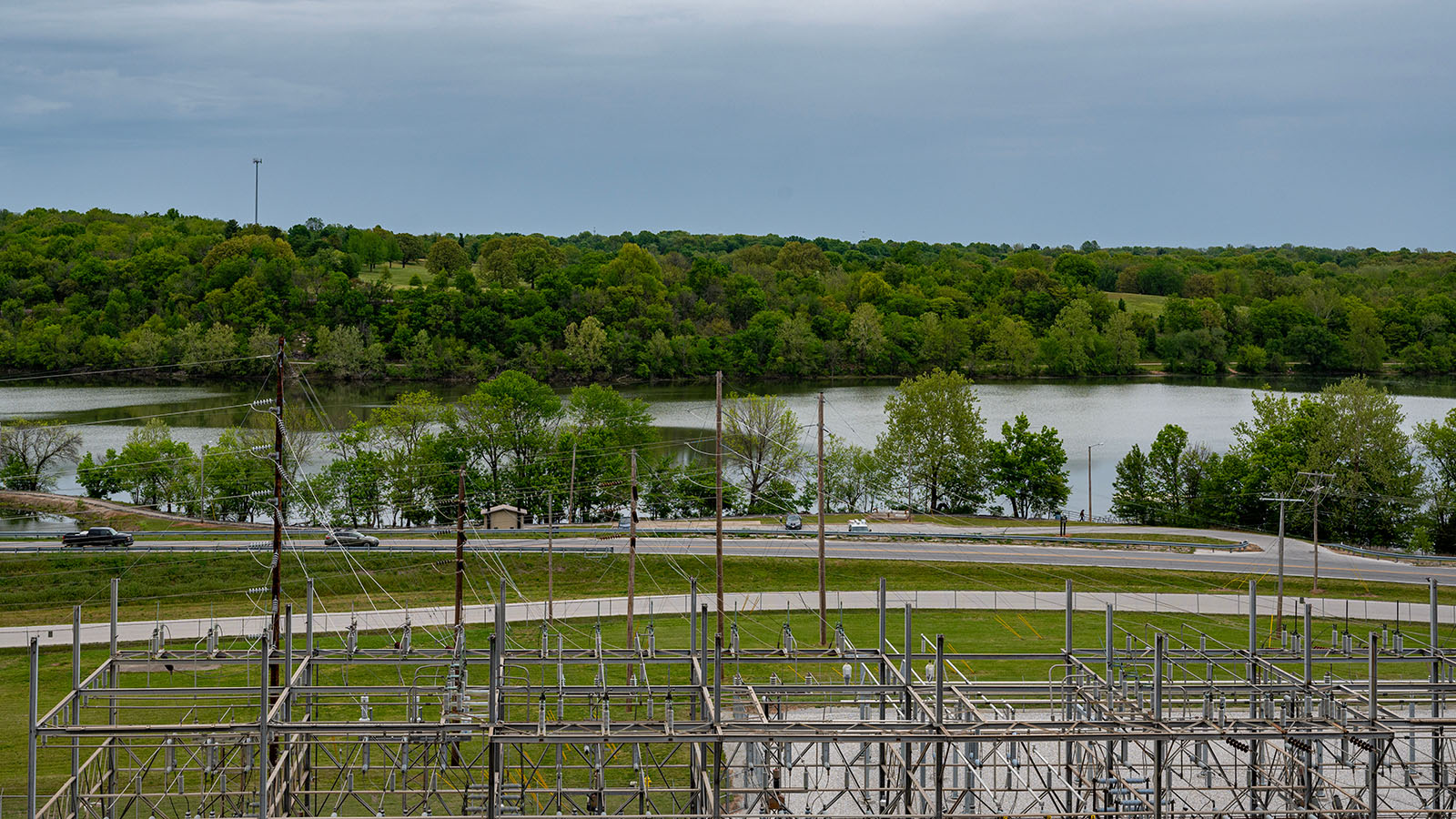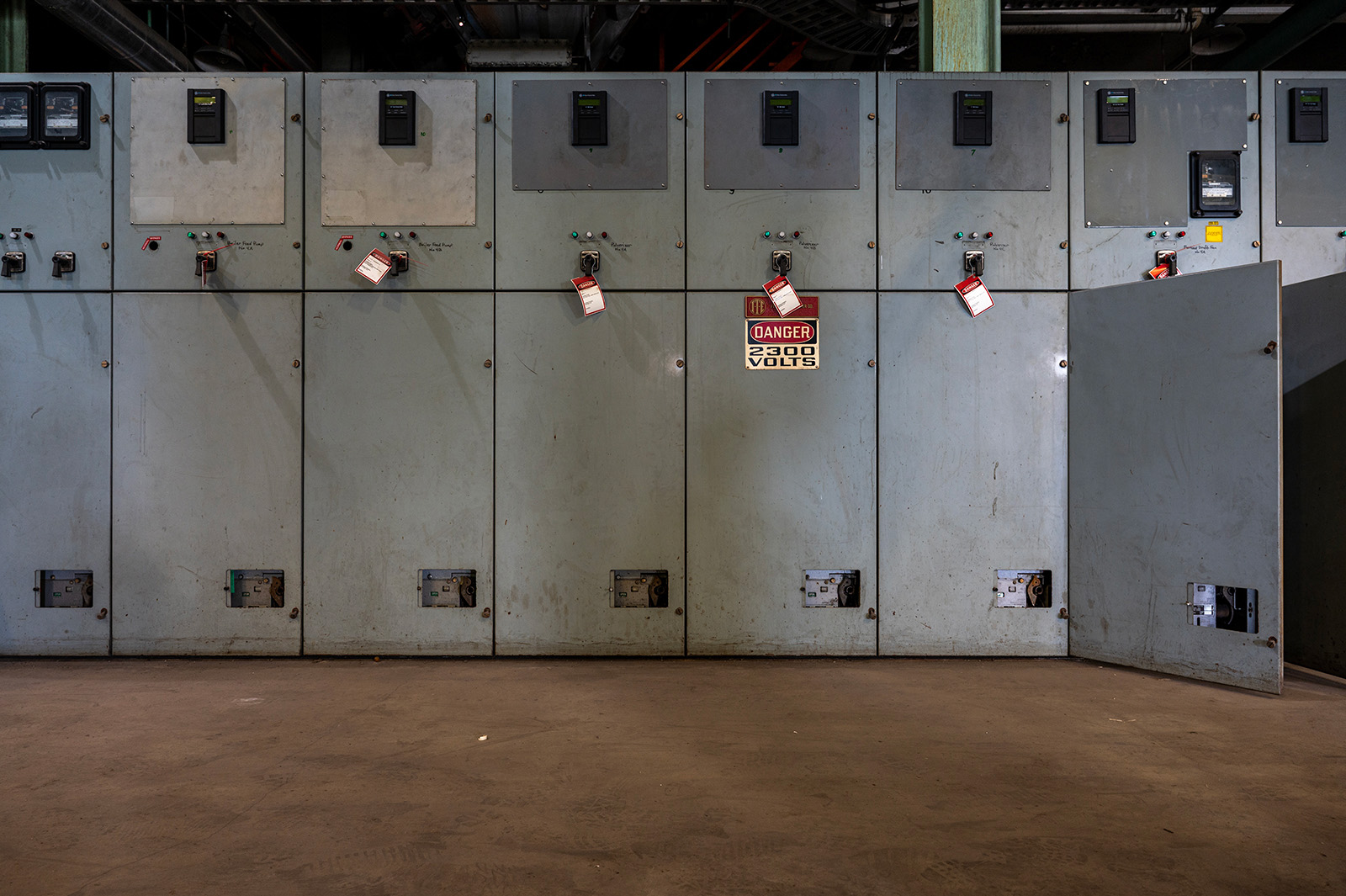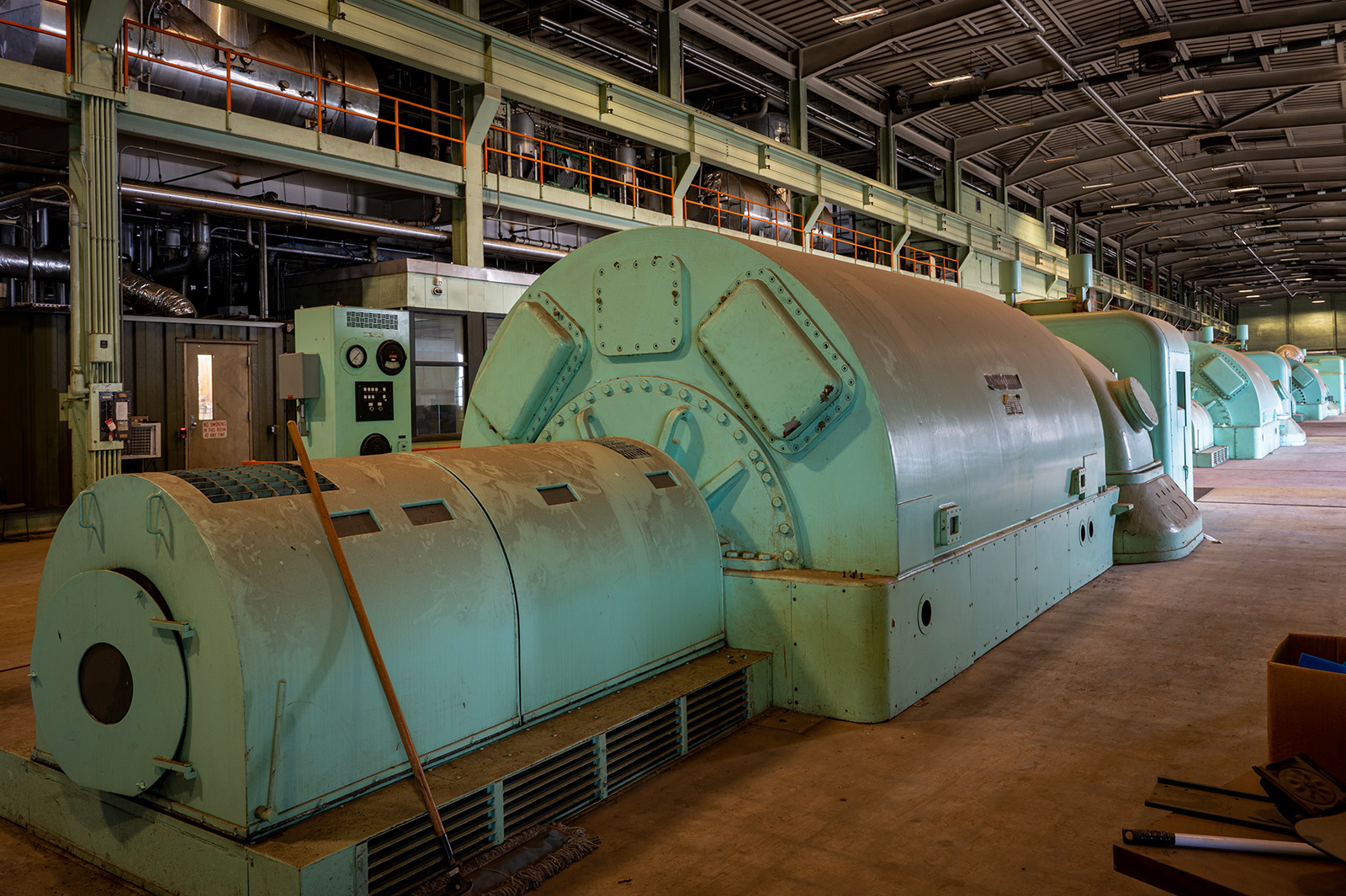Atop the now-decommissioned James River Power Station, one can see a large swath of what the City of Springfield aims to build into a destination.
The planning for the future of Lake Springfield is well underway, and at a public meeting May 4, nearly 300 people packed the Boathouse to listen and provide feedback on the early returns the city and a team of consultants have gathered on the possibilities – and challenges – facing the waterside development project.
Prior to that meeting, City Utilities staffers led excursions to the power station, where people could envision the possibilities for the behemoth structure that once provided power to much of Springfield.
Poster boards displaying varying ways to expand transportation and mobility, spur economic development in the area and outright change the lake itself were decorated with green and red stickers. Attendees placed the stickers to illustrate what the public does and doesn’t want to see around Lake Springfield.
“It’s really exciting what the possibilities down here are,” said Gary Gibson, the president and CEO of City Utilities.
Consultants map out multi-pronged planning process
The Lake Springfield Area Plan came to fruition through a pair of grants from the Hatch Foundation and the U.S. Economic Development Administration, totaling $1 million.
Steve Castaner, a program officer for the EDA’s regional Denver office, expressed the difficulty and competitiveness in acquiring the funding from the EDA, and praised the efforts in Springfield to get this planning project off the ground.
“This is a highly unusual project,” Castaner said. “I can’t think, in the last 10 years, we have ever done a project of this scale and this scope.”
The consulting group Crawford, Murphy and Tilly was hired last November to oversee the large planning project, and is collaborating with the city, City Utilities and other contractors to establish a framework for what makes the most sense for the lake and its roughly 1,000 surrounding acres of land.

“We’re looking at it through all sorts of different complex lenses to try to figure out what the best use of this property is for the future,” said Steve Prange, vice president of business development and strategy director at Crawford, Murphy and Tilly.
By the end of the planning, Prange and the consultants with expertise in the multi-pronged aspects of the Lake Springfield area will unveil a final presentation that will guide the city, developers and other stakeholders in turning what the Forward SGF comprehensive plan identified as a “redevelopment opportunity area” into a destination.
“Here’s what makes sense for the power plant, this is the economics of all this, this is how this pays off,” Prange said. “This is how many jobs this will create. This is the investment someone’s going to have to make. This is what the city’s going to have to do, what City Utilities is going to have to do. It’s a framing document that will really inform and help the community understand what the vision is.”
Possibilities and opinions stack up
Prange laid out the goals of the planning process before the packed crowd at the Boathouse:
- Attract innovative economic development and resilient job creation within the study area that complements regional vision and priorities.
- Develop a strategy for sustainable water quality and green infrastructure improvements.
- Establish an adaptive reuse strategy for the James River Power Station.
- Focus on transportation enhancements that are accessible and equitable to Lake Springfield and the surrounding communities.
- Embrace active and passive recreational opportunities as a regional economic development catalyst.
- Engage the community in a way that is inclusive of a diverse and multicultural perspective.
A representative from Geosyntec Consultants illustrated some possibilities the plan could consider regarding the dam, which cuts off the James River from Lake Springfield. Options include entirely removing the dam, creating a passageway for wildlife and recreation, or avoid any changes to the dam, and focus instead on making enhancements to the lake.

The public also had the opportunity to see the possibilities for access to the lake and the surrounding land. Everything from new and improved boat ramps, extensions or restrictions on surrounding roads, and added pathways for pedestrians and cyclists are possibilities being weighed for the plan.
In a station that displayed potential recreational amenities to the lake, attendees shared their desire for more trails, educational settings and community event spaces, and their disdain for other developments, such as hotels.
Based on surveys and feedback collected from previous meetings, safety, traffic, accessibility, water and pollution are among the biggest concerns in the Lake Springfield plan.
Public shares interest, cautious optimism in the future of their backyard

Myra Scroggs, of Springfield, is an active member of the Greater Ozarks Audubon Society and, while excited about the potential for economic development in the Lake Springfield area, is hopeful preservation of nature and wildlife are prioritized.
The Audubon Society frequents the Boathouse and the surrounding park, where its members carry out community science programs, in part to collect data on bird populations.
“We use this area a lot,” Scroggs said. “We’re interested in what becomes of it and are interested in maintaining, at least, wildlife in some areas.”
Brandon Urich, a resident of southeast Springfield, is interested not only in the future of the Lake Springfield area, but being involved and providing feedback to the authors of the plan.
“I think it’s an important area of Springfield, it’s a unique part of the city,” Urich said. “It’s right, kind of nestled in with everything else.”
Urich said he is optimistic about the visibility and transparency in the planning process up to this point, and the efforts of the city and consultants to collect community feedback.

Debora and Mark Biggs are residents of a nearby neighborhood, and were able to watch the stacks from the James River Power Station come down last February from their backyard.
“Something needs to happen,” Debora Biggs said. “I think this is kind of an area that a lot of people don’t take advantage of. I think there’s a lot of opportunity here.”
While Mark Biggs said he is excited about the possibilities for the lake, and the power station in particular presents, he acknowledges that there is a certain amount of “trepidation,” with it still being very early in the planning process.
“I hear the word economic development and it means something different from recreational opportunity,” he said. “It also means something very different to talk about the Lake Springfield project and then hearing tonight tha there’s a possibility of taking the dam out and returning it to a river as opposed to a lake.”
The Biggs are also concerned over what the plan could mean for their drives to and from home, as they rely on Kissick Avenue and surrounding roads.
“If it ends up being Walt Disney World Two, that’s going to be a real issue,” Mark Biggs said.


